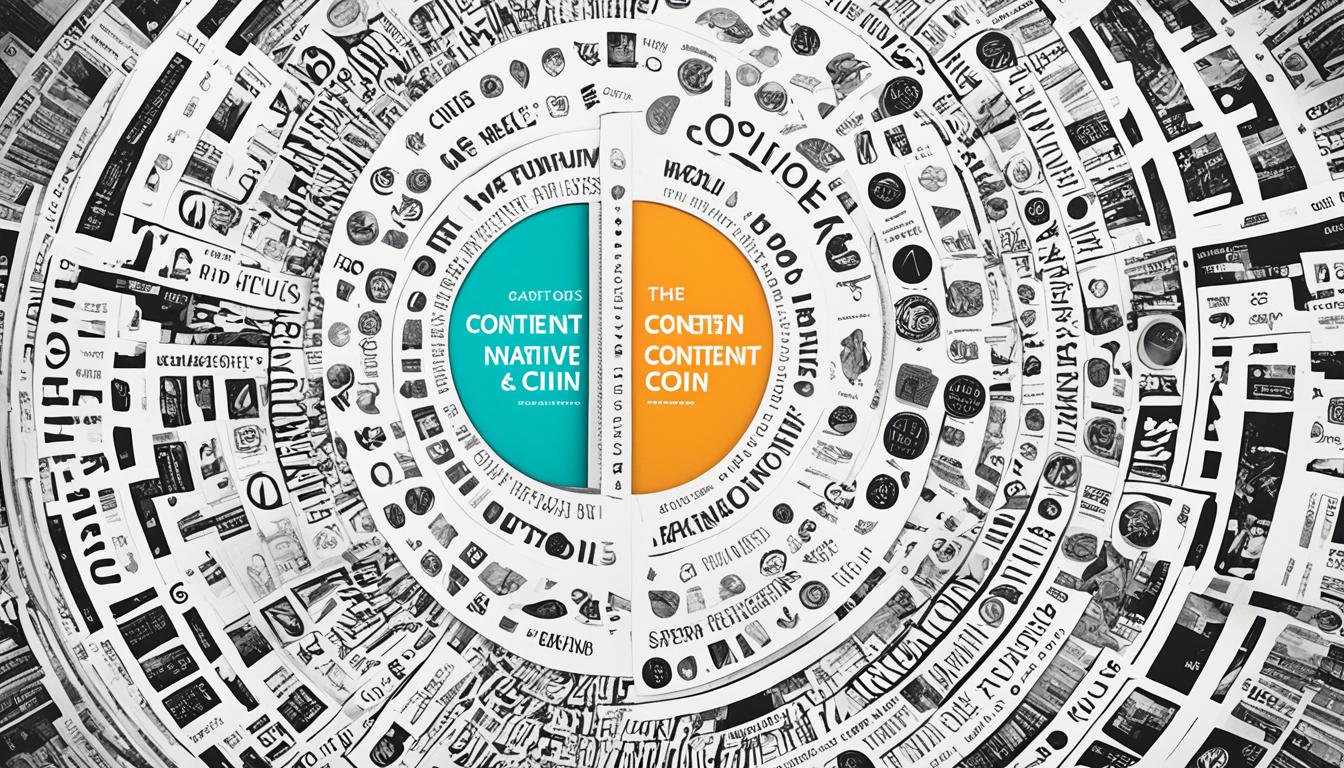In today’s rapidly evolving business landscape, it is crucial to understand the difference between personal selling and direct marketing. Personal selling is a face-to-face or direct communication approach used by sales representatives to persuade potential customers to purchase products or services. On the other hand, direct marketing is a marketing strategy that involves communicating directly with individuals or businesses to promote products or services through channels such as direct mail, email marketing, telemarketing, or targeted advertising. Both approaches have their own unique advantages, and when to use each method depends on the specific goals and target audience of the business.
Key Takeaways:
- Personal selling and direct marketing are two different approaches to reaching potential customers.
- Personal selling involves face-to-face interaction, while direct marketing utilizes various communication channels.
- Personal selling focuses on building relationships and providing tailored solutions.
- Direct marketing allows for targeted reach, personalized messaging, and measurable results.
- The choice between personal selling and direct marketing depends on factors such as the nature of the product or service and the target audience.
Understanding Direct Marketing
Direct marketing is a marketing strategy that involves communicating directly with individuals or businesses to promote products or services. It utilizes various channels to reach specific audiences, including direct mail, email marketing, telemarketing, and targeted advertising.
One of the key advantages of direct marketing is the ability to establish a personalized connection with potential customers. By directly reaching out to individuals or businesses, businesses can tailor their messages and offers to align with their target audience’s needs and preferences. This targeted approach increases the chances of generating leads and driving sales.
A study conducted by the Data & Marketing Association revealed that direct mail achieved impressive response rates in 2020. Prospect lists recorded a response rate of 4.9%, while house lists achieved an even higher rate of 9%. These response rates surpassed those of digital channels, indicating the effectiveness of direct marketing in capturing the attention and interest of recipients.
Direct marketing allows businesses to measure the performance of their campaigns accurately. With the ability to track and analyze campaign results, businesses can gain valuable insights into the effectiveness of their marketing efforts. By monitoring response rates, conversion rates, and other key metrics, businesses can make data-driven decisions to optimize their direct marketing strategies and achieve better results.
In summary, direct marketing offers businesses the opportunity to establish a personalized connection with their target audience, resulting in higher response rates and increased sales. By leveraging various channels to reach specific audiences, businesses can optimize their marketing efforts and achieve measurable results.
| Channel | Advantages |
|---|---|
| Direct Mail | Highly targeted, tangible, and can stand out in the mailbox |
| Email Marketing | Cost-effective, allows for personalization and automation |
| Telemarketing | Enables direct communication and immediate feedback |
| Targeted Advertising | Allows for precise audience targeting and measurable results |
Understanding Personal Selling
Personal selling is a vital communication approach used by sales representatives to persuade potential customers in making purchase decisions. It involves face-to-face interactions, enabling salespeople to build relationships, address customer needs, and provide tailored solutions based on individual requirements. This direct communication method allows for immediate feedback, customization, and the building of trust and rapport with customers.
In 2020, personal selling played a significant role in the United States’ sales landscape, accounting for a staggering $464 billion in sales, as reported by Statista. The face-to-face nature of personal selling allows sales representatives to effectively showcase the benefits of products or services, overcome objections, and tailor their pitch to meet the unique needs of each customer. Through personal selling, salespeople can guide customers through the buying process and contribute to increased sales, customer satisfaction, and retention.
Personal selling presents numerous advantages over other selling techniques, thanks to its emphasis on direct communication and personal interaction. This approach goes beyond impersonal mass marketing efforts, allowing sales representatives to establish a genuine connection with customers, offer solutions that address their specific pain points, and respond promptly to their queries. The human element in personal selling fosters trust, confidence, and a sense of reassurance in customers.
Furthermore, personal selling enables sales representatives to gather immediate feedback from customers, enabling them to make on-the-spot adjustments and recommendations. This real-time interaction not only enhances the effectiveness of the sales process but also provides valuable insights into customer preferences, behavior, and market trends. Sales representatives can leverage this information to tailor their approach, refine their strategies, and ultimately drive more sales.
In summary, personal selling is a powerful communication approach used by sales representatives to engage with potential customers and influence their purchasing decisions. This face-to-face interaction allows for customization, immediate feedback, and the building of strong customer relationships. In the United States, personal selling continues to be a significant driver of sales success, contributing to billions of dollars in revenue. Its advantages in direct communication and personalized solutions make personal selling an indispensable component of any comprehensive sales strategy.
| Advantages of Personal Selling | Benefits |
|---|---|
| Direct interaction with customers | Establishes trust and rapport |
| Customized solutions | Addresses specific customer needs |
| Immediate feedback | Allows for real-time adjustments and recommendations |
| Increased sales | Effectively communicates product benefits and overcomes objections |
| Customer satisfaction | Builds long-lasting relationships |
Difference between Direct Marketing and Personal Selling
When it comes to marketing strategies, the difference between direct marketing and personal selling lies in their communication channels, reach, personalization, cost-effectiveness, measurement and analytics capabilities, mass communication, targeted audience, and response rates.
Direct marketing utilizes various communication channels such as direct mail, email, telemarketing, targeted advertising, and online marketing. These channels allow businesses to reach a broader audience simultaneously, making it a cost-effective method of communication. Direct marketing also offers the ability to personalize messages based on customer data and preferences, providing a more tailored approach to marketing. In addition, businesses can easily track and measure the performance of their campaigns, allowing for efficient measurement and analytics.
On the other hand, personal selling involves direct and personal interaction between salespeople and customers. This approach focuses on establishing long-term relationships with customers and providing customized solutions to meet their specific needs. Through face-to-face interactions, salespeople can build trust and rapport with customers, creating a personalized experience. Personal selling also boasts particularly high response rates, as the direct interaction allows salespeople to address customer objections and provide immediate feedback.
While direct marketing offers mass communication and targeted reach, personal selling emphasizes building relationships and providing tailored solutions. The choice between these two approaches depends on factors such as the nature of the product or service, the target audience, and the overall marketing strategy of the business.
Comparison between Direct Marketing and Personal Selling
Direct marketing and personal selling are two distinct approaches to reaching and engaging with potential customers, each with its own advantages.
Direct marketing emphasizes broad, personalized mass communication, offering cost-effective methods, high response rates, and the ability to target specific demographics or interests. It involves using channels such as direct mail, email marketing, telemarketing, targeted advertising, and online marketing to reach a larger audience simultaneously. Direct marketing allows businesses to deliver personalized messages based on customer data and preferences, providing a more tailored approach to marketing. It also provides robust tracking and measurement capabilities, allowing businesses to analyze the performance of their campaigns and make data-driven decisions.
On the other hand, personal selling focuses on building relationships, customization, providing immediate feedback, and establishing trust and rapport with potential customers. It involves face-to-face interactions between sales representatives and customers, allowing for direct communication and personalized attention. Personal selling is particularly effective for complex or high-value sales that require in-depth product knowledge and a consultative approach. It enables salespeople to understand and address individual customer needs, overcome objections, and build long-term customer relationships. Immediate feedback from customers allows salespeople to adapt their approach and tailor their solutions in real-time, increasing the chances of closing the sale.
The choice between direct marketing and personal selling depends on various factors such as the nature of the product or service, the target audience, and the overall marketing strategy of the business. While direct marketing offers the advantages of broad reach, cost-effectiveness, and efficient targeting, personal selling excels in building customer relationships, customization, and providing immediate feedback. Businesses need to consider their specific goals, target audience, and available resources when determining which approach to employ or whether a combination of both would be most effective in achieving their marketing objectives.
Advantages of Direct Marketing:
- Ability to reach a larger audience simultaneously
- Cost-effective methods
- High response rates
- Targeting specific demographics or interests
- Personalized messages based on customer data and preferences
- Robust tracking and measurement capabilities
Advantages of Personal Selling:
- Building relationships with potential customers
- Customization of solutions to meet individual customer needs
- Immediate feedback from customers
- Establishing trust and rapport
- Effective for complex or high-value sales
Pros and Cons of Direct Marketing
Direct marketing offers a range of advantages and disadvantages for businesses. Understanding the pros and cons can help organizations make informed decisions about incorporating direct marketing into their overall marketing strategies.
Pros:
- Targeted Reach: Direct marketing enables businesses to reach specific audiences who are already interested in their products or services.
- Personalization: Direct marketing allows for the customization of messages based on customer preferences, increasing the chances of engagement and conversion.
- Measurable Results: With direct marketing, businesses can track and measure the performance of their campaigns, gaining valuable insights into customer behavior and campaign effectiveness.
- Cost-Efficiency: Compared to traditional advertising methods, direct marketing can be a more cost-effective approach, as it eliminates the need for intermediaries and reduces overhead costs.
- Quick Response: Direct marketing generates fast customer responses, enabling businesses to capitalize on immediate sales opportunities and foster customer engagement.
Cons:
- Intrusiveness: Some customers may find direct marketing methods intrusive or spammy, leading to a negative perception of the business.
- Information Overload: With direct marketing, customers may receive an overwhelming number of marketing messages, leading to information overload and reduced message retention.
- Data Privacy Concerns: Handling customer data in direct marketing requires compliance with privacy regulations and can raise concerns about data privacy and security.
- Creative Limitations: Certain direct marketing methods, such as email or direct mail, have limited space for creativity, making it challenging to design engaging and impactful campaigns.
- Response Variability: Response rates in direct marketing can vary and may not always meet expectations, making it essential for businesses to continuously test and refine their strategies.
| Pros | Cons |
|---|---|
| Targeted Reach | Intrusiveness |
| Personalization | Information Overload |
| Measurable Results | Data Privacy Concerns |
| Cost-Efficiency | Creative Limitations |
| Quick Response | Response Variability |
Pros and Cons of Personal Selling
Personal selling, as a direct communication approach, has its own set of pros and cons that businesses should consider when formulating their sales strategies.
Pros of Personal Selling
- Relationship Building: Personal selling allows salespeople to develop strong, one-on-one relationships with customers, fostering trust and loyalty.
- Customization: Salespeople can tailor their approach to address specific customer needs and objections, increasing the chances of closing a sale.
- Immediate Feedback: Through personal interactions, salespeople can gather real-time feedback from customers, allowing for rapid adjustments and improvements.
- Trust and Rapport: Personal selling helps build trust and rapport with customers, enhancing their confidence in the product or service being offered.
- Decision Influencer: Salespeople have the ability to directly influence customer decisions through persuasive and consultative approaches, guiding them towards a favorable purchasing choice.
Cons of Personal Selling
- Cost-Intensive: Personal selling often involves significant costs such as salaries, training, and travel expenses, making it a more expensive sales method compared to other approaches.
- Limited Reach: Personal selling is not as effective for reaching a large, geographically dispersed audience, limiting the potential customer base.
- Time-Consuming: Building relationships and making sales through personal selling can be a time-consuming process, requiring extensive effort and resources.
- Dependence on Salespeople: The success of personal selling is highly dependent on the skills, performance, and dedication of individual salespeople, which introduces a level of risk and variability.
- Resistance: Some customers may be resistant to in-person sales interactions and prefer more autonomous shopping experiences, posing a potential barrier to the effectiveness of personal selling.
Despite these challenges, personal selling can be a powerful tool for businesses that rely on building strong customer relationships and delivering customized solutions to meet customer needs.
Examples of Direct Marketing and Personal Selling
Direct marketing and personal selling are two effective strategies businesses employ to reach and engage potential customers. Here are some examples of direct marketing:
- Sending personalized email campaigns to a targeted list of potential customers
- Promoting a product or service and encouraging specific actions, such as making a purchase or signing up for a newsletter
On the other hand, personal selling involves face-to-face interactions and building relationships. Here are some examples of personal selling:
- A salesperson giving a product demonstration at a customer’s home
- A car salesperson assisting a customer in choosing a vehicle
- A financial advisor offering personalized investment advice
These examples showcase how both direct marketing and personal selling can be applied to different industries and scenarios, highlighting the versatility and effectiveness of these strategies in driving sales and customer engagement.

Strategies for Personal Selling vs Direct Marketing
The success of personal selling and direct marketing hinges on implementing effective strategies tailored to the specific goals and target audience of a business. Whether utilizing personal selling or direct marketing, careful planning and execution are essential to drive sales and achieve marketing objectives.
Strategies for Personal Selling
- Identify the Profile of the Typical Customer: Gain a deep understanding of the target customer by analyzing demographics, psychographics, and buying behaviors.
- Conduct a SWOT Analysis: Evaluate the strengths, weaknesses, opportunities, and threats relevant to the business and its products or services.
- Define an Action Plan: Develop a clear roadmap outlining sales objectives, target markets, key messaging, and performance metrics.
- Prepare Oneself and the Team: Equip sales representatives with extensive product knowledge, effective communication skills, and the ability to address customer objections.
- Keep Track of Actions: Implement a robust tracking system to monitor sales activities, measure progress, and identify areas for improvement.
Strategies for Direct Marketing
- Build a Database of Potential Customers: Gather and organize customer data to create a comprehensive database for targeted marketing campaigns.
- Segment the Target Audience: Divide the customer base into distinct segments based on characteristics such as demographics, interests, or purchase history.
- Use Various Methods of Direct Communication: Employ channels such as direct mail, email marketing, telemarketing, or targeted advertising to reach the intended audience.
- Personalize Messages: Craft customized messages that resonate with individual customers, addressing their specific needs and preferences.
- Track and Analyze Campaign Results: Utilize analytics tools to measure the effectiveness of direct marketing campaigns, optimize strategies, and refine future efforts.
| Personal Selling | Direct Marketing |
|---|---|
| Face-to-face communication | Remote communication |
| Builds personal relationships | Reaches a broader audience |
| Immediate feedback | Measurable campaign results |
| Tailored solutions | Personalized messaging |
| Highly persuasive | Cost-efficient |
Importance and Benefits of Personal Selling and Direct Marketing
Personal selling and direct marketing play vital roles in a company’s overall sales and marketing strategy. Each method offers unique advantages and benefits that can contribute to the success of a business.
The Importance of Personal Selling
Personal selling allows for direct interaction with customers, creating opportunities to build relationships and establish trust and rapport. This face-to-face communication approach enables sales representatives to tailor solutions based on individual customer needs, ensuring a personalized and targeted sales experience. This level of customization is particularly effective for complex or high-value sales, where a deep understanding of the customer’s requirements is crucial.
The Benefits of Personal Selling
- Increased Sales: Personal selling can lead to higher conversion rates and increased sales because it allows sales representatives to address customer objections directly and provide immediate feedback.
- Customer Satisfaction: By engaging in personalized conversations and understanding customer needs, sales representatives can offer tailored solutions, leading to higher customer satisfaction and loyalty.
- Building Trust and Rapport: Face-to-face interactions allow sales representatives to build trust and rapport with customers, which can significantly influence purchase decisions.
The Importance of Direct Marketing
Direct marketing plays a crucial role in reaching specific target audiences efficiently and effectively. By utilizing various direct communication channels, businesses can deliver targeted messages directly to potential customers, increasing the chances of generating leads and driving sales. Direct marketing allows for precision and cost-efficiency, making it a valuable tool in today’s competitive market.
The Benefits of Direct Marketing
- Expanded Reach: Direct marketing enables businesses to reach a larger audience through channels such as direct mail, email marketing, telemarketing, and targeted advertising, ensuring broader market exposure.
- Increased Brand Awareness: By consistently delivering targeted messages to potential customers, direct marketing helps build brand recognition and awareness.
- Higher Response Rates: Direct marketing campaigns often yield higher response rates compared to other marketing methods, enabling businesses to generate leads and drive immediate customer action.
Both personal selling and direct marketing offer unique advantages and benefits to businesses. Personal selling excels in creating personal connections, customization, and immediate feedback, while direct marketing excels in broad reach, targetability, and measurable results. By leveraging both approaches strategically, businesses can optimize their sales and marketing efforts and achieve greater success.
Challenges and Considerations for Personal Selling and Direct Marketing
Personal selling and direct marketing present distinct challenges and considerations for businesses. Personal selling, while effective in building relationships and providing tailored solutions, faces challenges such as:
- Cost-intensive nature: Personal selling requires significant investments in salaries, training, and travel expenses.
- Limited reach: Unlike direct marketing, personal selling is not suitable for reaching a large, geographically dispersed audience.
- Time-consuming process: Building relationships and making sales through personal selling can be a time-consuming endeavor.
Considerations for personal selling include:
- Dependence on individual salespeople: The success of personal selling heavily relies on the skills and performance of individual salespeople.
- Continuous training and support: Businesses need to provide ongoing training and support to sales teams to ensure their effectiveness.
On the other hand, direct marketing presents its own set of challenges, including:
- Potential intrusiveness: Some customers may find direct marketing methods intrusive or spammy, negatively impacting their perception of the brand.
- Data privacy concerns: Handling customer data in direct marketing requires compliance with privacy regulations to ensure customer trust and data security.
Considerations for direct marketing include:
- Targeted messaging: Direct marketing campaigns must be carefully crafted to ensure relevance and resonate with the intended audience’s interests and needs.
- Customer data management: Effective direct marketing requires proper management and utilization of customer data for personalization and targeting.
Understanding and addressing these challenges and considerations is crucial for businesses aiming to leverage the benefits of personal selling and direct marketing while mitigating potential risks and maximizing their marketing efforts.
| Challenges | Personal Selling | Direct Marketing |
|---|---|---|
| Cost | High | Varies, but generally lower |
| Reach | Limited | Wide |
| Time-consuming | Yes | No |
| Dependence on Salespeople | High | No |
| Intrusiveness | No | Yes |
| Data Privacy Concerns | No | Yes |
Conclusion
In conclusion, personal selling and direct marketing are two highly effective approaches for businesses to reach and engage with potential customers. Personal selling involves face-to-face interactions, allowing sales representatives to build relationships, address customer needs, and provide tailored solutions. On the other hand, direct marketing utilizes various channels, such as direct mail, email marketing, telemarketing, and targeted advertising, to reach specific audiences and deliver personalized messages.
The choice between personal selling and direct marketing depends on several factors, including the nature of the product or service, the target audience, and the overall marketing strategy. Personal selling is particularly effective for complex or high-value sales that require in-depth product knowledge and the establishment of trust and rapport. Direct marketing, on the other hand, offers targeted reach, measurable results, and cost-efficiency.
Both personal selling and direct marketing have their own advantages and considerations. Businesses should carefully consider their goals and target audience to determine the most effective strategy for their sales and marketing efforts. By leveraging the strengths of personal selling and direct marketing, businesses can maximize their sales potential and achieve sustainable growth in today’s competitive marketplace.
FAQ
What is the difference between personal selling and direct marketing?
Personal selling involves face-to-face or direct communication between sales representatives and potential customers, while direct marketing utilizes channels such as direct mail, email marketing, telemarketing, or targeted advertising to reach and engage with individuals or businesses.
What are the advantages of direct marketing?
Direct marketing offers targeted reach, personalization of messages, measurable results, cost-efficiency, and quick customer response.
What are the advantages of personal selling?
Personal selling allows for building relationships, customization of solutions, immediate feedback, establishing trust and rapport, and directly influencing customer decisions.
What are some examples of direct marketing?
Examples of direct marketing include personalized email campaigns, direct mail, telemarketing, and targeted advertising.
What are some examples of personal selling?
Examples of personal selling include sales representatives giving product demonstrations, car salespeople assisting customers in choosing vehicles, and financial advisors providing one-on-one investment advice.
What are some strategies for personal selling and direct marketing?
Strategies for personal selling may include profiling the typical customer, conducting SWOT analysis, defining an action plan, preparing oneself and the team, and tracking actions. Strategies for direct marketing may include building a customer database, segmenting the target audience, using various direct communication methods, personalizing messages, and tracking campaign results.
What is the importance of personal selling and direct marketing?
Personal selling allows for direct interaction, customization, and building customer relationships, leading to increased sales and customer satisfaction. Direct marketing enables targeted reach, personalization, increased brand awareness, and higher response rates.
What are the challenges and considerations for personal selling and direct marketing?
Challenges for personal selling include high costs, limited reach, time-consuming efforts, dependence on salespeople, and potential resistance from customers. Considerations for direct marketing include potential intrusiveness, information overload, data privacy concerns, creative limitations, and response variability.




